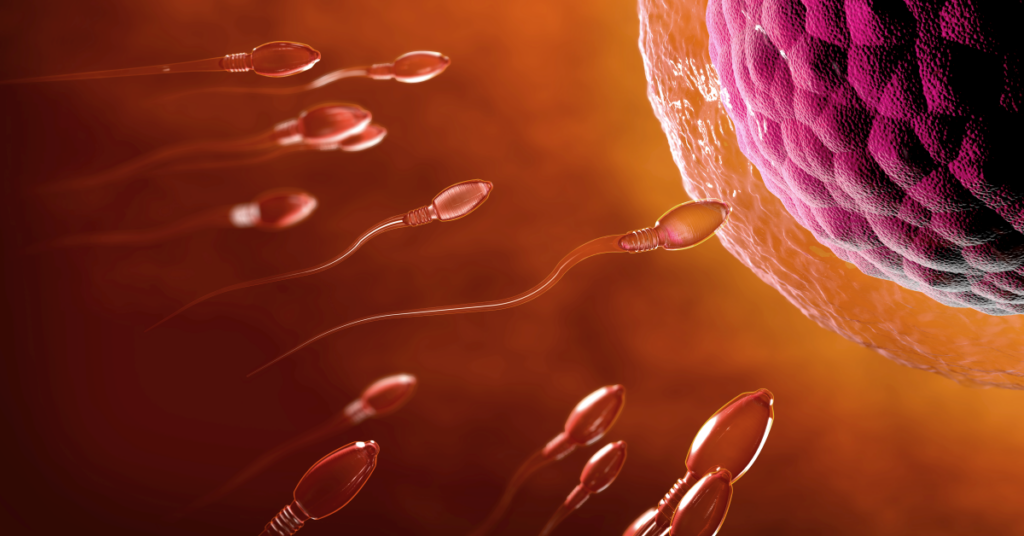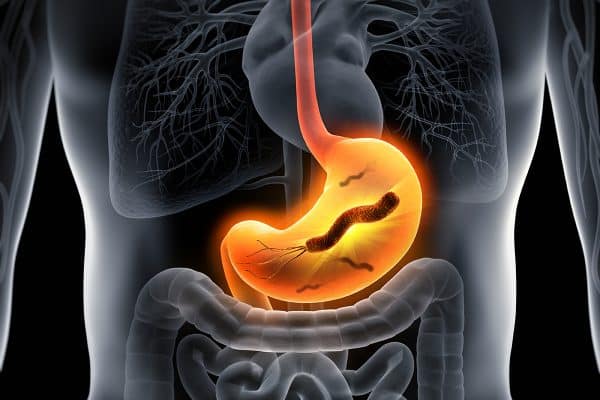- Research
- Series
The “Tour d’horizon en trois questions” puts different kinds of research in the spotlight and takes an informed look at current events.

Associate Professor Géraldine Delbès, an expert in reproductive toxicology, has been studying the impact of medical and environmental substances on the development of male reproductive cells for years.
Infertility is affecting more and more people around the world. In fact, according to the World Health Organization (WHO), 1 in 6 people will experience it in their lifetime. While reproductive problems affect people of all sexes, male infertility seems to be less recognized as a societal issue.
Associate Professor Géraldine Delbès, an expert in reproductive toxicology, has been studying the impact of medical and environmental substances on the development of male reproductive cells for years.
In her laboratory at INRS’ Armand-Frappier Santé Biotechnologie Research Centre, she focuses on early changes in the production of a particular type of cell: germ cells, which are the precursors of sperm cells.
In short, Professor Delbès observes what happens long before a future child is conceived, over the parents’ entire lives. Géraldine Delbès is here to answer our questions to mark Canadian Fertility Awareness Week, which runs from April 21 to 27, 2024.
Male infertility is an increasingly high-profile subject, but just 10 years ago it was rarely, if ever, discussed. Why the focus in recent years? What’s changed?
Renowned American epidemiologist Shanna Swan, author of the book Count Down, and her international collaborators sounded the alarm by publishing groundbreaking statistical analyses in 2017* and 2023**, showing the global decline in sperm count over the last 50 years.
While epidemiological and experimental research has been happening since the 1990s, these high-profile publications helped raise public awareness of the issue. In late 2023, the WHO published a report that put this subject of public interest back on the table. The weight of the scientific evidence was there for all to see.
One of the hypotheses explaining this decline in fertility is the growing number of environmental chemicals, which may be toxic to human health and reproduction. These include plasticizers and bisphenols, which are found everywhere in our daily lives. Here again, awareness of these types of exposure and their effects on biodiversity and human health is sparking widespread interest… and concern. More and more people are dealing with infertility, either personally or in their family circle. Naturally, this helps raise public awareness as well. Finally, I believe that the societal shift towards gender equality is making it less taboo to talk about male infertility these days.
We hear a lot about the causes of infertility in both sexes. Your laboratory is looking into the ways that exposure to certain substances while the male reproductive organs are developing could affect fertility. Can you tell us more?
Reproduction is a bodily function that begins in utero, when the genitals develop. At this stage, developing testicles are highly sensitive to the hormonal environment. That means they can be disrupted by hormonal imbalances caused by chemical compounds that mimic natural hormones. These compounds can come from medicines, but also from a plethora of sources in our everyday lives, like plastics, cosmetics, electronics, and flame retardants on fabrics.
Since the 1990s, experimental studies—some of which I took part in or have conducted since my doctorate—have demonstrated that these early exposures can affect germline programming, and can therefore have invisible consequences when it comes time to start a family. These consequences can be seen after puberty, affecting sperm quality and quantity.

Spermatozoa are fascinating cells: they have a unique shape and ability to move, on top of being able to pass on parental genes to offspring! Sperm quality can be measured by the motility and morphology (shape) of the cell, as well as by the DNA packaged in the cell head.
Recent fundamental advances have shown that DNA and its “packaging” in the sperm cell’s head affect the way offspring develop from the moment the embryo is created. These demonstrations highlight the importance of better understanding how these elements are put in place, and how the environment can affect them. In doing so, we can help pregnancies succeed and keep future children healthier.
I study these questions in the laboratory, where we mainly use experimental models. At the same time, lifelong epidemiological studies are beginning to add to the evidence as well.
In a recent report, you joined colleagues from Quebec and abroad in sounding the alarm on the lack of knowledge surrounding male fertility. How is it that there is so little research and treatment data on male infertility?
Our recently published report highlights the need to reconsider the way we address and think about the treatment of human infertility. Reproductive medicine is based on the specialty of obstetrics and gynecology, making it very female-centred. There are few male fertility specialists in fertility centres, and most fertility treatments are aimed at women. Fertility clinics have been assessing male fertility in the same way since they were created in the 1980s! And the solutions fall largely on the female partner, who has to undergo the hormonal treatments necessary for assisted reproduction.
The reality is that we lack diagnostic tools for males, on both a clinical and genetic level. We must recognize this need and better fund the research to develop and implement these tools. Research into the biological causes and origins of reproductive problems is necessary, but still poorly recognized and greatly underfunded. Yet recent evidence shows that sperm quality could be a significant indicator of a person’s overall health.
Part of the solution lies in raising public awareness. It’s important to understand that male infertility can also be a cause of infertility in a heterosexual couple, and that it can originate very early in the partner’s life. That said, while the environment can hinder sperm production, adopting healthy lifestyle habits can also help reverse these adverse effects. So there are solutions and many advantages to advancing these aspects of reproductive medicine.
Professor Delbès is the recipient of the 2016 Knowledge Transfer Award and the 2021 Equity, Diversity, and Inclusion Recognition Award from the Réseau Québécois en Reproduction. She is a member of the Intersectoral Centre for Endocrine Disruptor Analysis (ICEDA) and of the Pasteur Network. She is also the former president of the Society of Toxicology of Canada.
* Levine H, Jørgensen N, Martino-Andrade A, Mendiola J, Weksler-Derri D, Mindlis I, Pinotti R, Swan SH. Temporal trends in sperm count: a systematic review and meta-regression analysis. Hum Reprod Update. 2017 Nov 1;23(6):646-659. doi: 10.1093/humupd/dmx022. PMID: 28981654; PMCID: PMC6455044.
** Levine H, Jørgensen N, Martino-Andrade A, Mendiola J, Weksler-Derri D, Jolles M, Pinotti R, Swan SH. Temporal trends in sperm count: a systematic review and meta-regression analysis of samples collected globally in the 20th and 21st centuries. Hum Reprod Update. 2023 Mar 1;29(2):157-176. doi: 10.1093/humupd/dmac035. PMID: 36377604.



